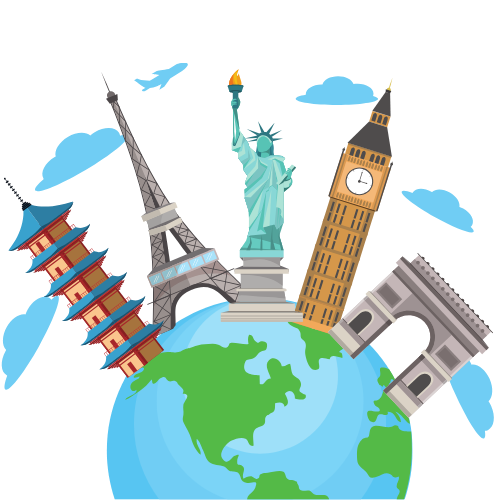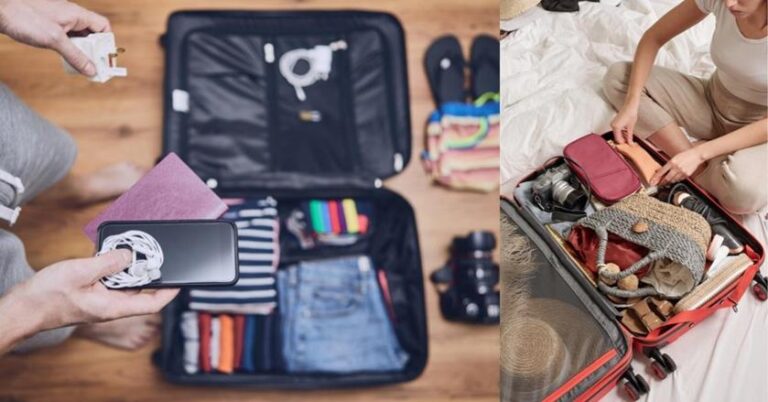Packing for a 2-week trip can be both exciting and stressful. Whether you’re traveling for leisure, business, or a combination of both, being prepared with the right items ensures you won’t face common travel mishaps like forgetting essentials, overpacking, or missing key items. A well-thought-out packing strategy not only makes your trip more comfortable but also ensures you’re prepared for any situation, from unexpected weather changes to formal events.
This guide will walk you through the best way to pack for a two-week trip. From choosing the right luggage and packing efficiently to providing a detailed checklist that includes everything from clothing to toiletries and tech gadgets, this guide will help you prepare stress-free.
Why Packing Smart Matters
Packing the right way can make a significant difference in your travel experience. A well-packed suitcase saves time at the airport, makes navigating through your destination easier, and avoids extra baggage fees or the hassle of lugging around unnecessary items. When traveling for 14 days, you need versatility in your wardrobe, preparation for unforeseen circumstances, and an organized method to fit everything into your luggage efficiently.
Key Benefits of Smart Packing:
- Ease of travel: A lighter, well-organized suitcase allows for more effortless transportation.
- Versatility: The ability to mix and match clothing ensures you’re prepared for different activities and weather conditions.
- Saving money: Avoid checked baggage fees and extra purchases abroad by packing strategically.
- Preparedness: Having all the essentials at hand, from toiletries to adapters, means you’re ready for any situation during your trip.
Packing Checklist for a 2-Week Trip
1. Choosing the Right Luggage
Before you start packing, it’s crucial to select the right kind of luggage. The choice between a suitcase and a backpack depends on your destination, transportation, and personal comfort. For a two-week trip, you may need:
- Carry-on suitcase (for light travelers): A carry-on can be an excellent option if you plan to pack light and want to avoid checking luggage.
- Medium to large suitcase (for more extended trips or more variety in clothing): This gives you enough space to comfortably pack for 14 days without overpacking.
- Backpack (for the adventurous traveler): Ideal for more rugged destinations, and where mobility and flexibility are essential, such as multi-destination trips or remote locations.
Key Luggage Features to Consider:
- Durability: Make sure your luggage can withstand the rigors of travel.
- Weight: Lightweight luggage helps you avoid overweight fees.
- Compartments: Suitcases with compartments or packing cubes help keep items organized.
- Security: Choose luggage with sturdy locks or TSA-approved locks for added security.
2. Clothing: Mix and Match
Packing versatile clothing is essential for any two-week trip. Instead of overpacking, select pieces that you can mix and match, allowing you to create multiple outfits from a limited wardrobe.
Clothing Essentials Checklist:
- 4-6 Tops (T-shirts, blouses, or casual shirts): Neutral colors like white, black, and gray can be mixed and matched with various pants and skirts.
- 2-3 Pairs of Bottoms (jeans, shorts, skirts): Dark-colored pants or jeans can be dressed up or down, making them versatile for both casual and formal occasions.
- 1-2 Formal Outfits: Whether it’s a formal dinner, business meeting, or a night out, pack one dressy outfit to be prepared.
- 1 Light Jacket or Sweater: Even in warmer climates, temperatures can drop at night. A lightweight jacket will keep you warm and comfortable.
- 1-2 Dresses or Jumpsuits (for women): Versatile and easy to dress up or down depending on the occasion.
- 1 Pair of Activewear: If you plan on hiking, exercising, or doing other physical activities, one set of activewear is essential.
- 1-2 Pairs of Pajamas or Sleepwear.
- 7-10 Pairs of Underwear.
- 7-10 Pairs of Socks (and extras if you’re heading to a cold climate).
Footwear Essentials Checklist:
- Comfortable Walking Shoes: Choose a pair that offers support for long days of sightseeing.
- Dress Shoes or Sandals: For formal dinners or events, pack a pair of dressier shoes.
- Flip-flops or Sandals: These are great for the beach, poolside, or casual days.
Outerwear (Dependent on Destination):
- Rain Jacket: For unexpected downpours, pack a lightweight, foldable rain jacket.
- Winter Coat: If you’re traveling to a colder climate, choose a heavy coat that packs easily.
- Hat and Gloves: Winter accessories are essential for colder destinations, especially if you’re traveling during fall or winter.
3. Toiletries and Personal Care
Airports often limit liquids in carry-on luggage, but you can still bring the essentials with you. Focus on travel-sized products or invest in reusable containers that you can refill.
Toiletries Checklist:
- Shampoo and Conditioner: Opt for travel-sized bottles or bars.
- Body Wash or Soap: A small, portable body wash or soap.
- Toothbrush and Toothpaste: Don’t forget travel-sized toothpaste.
- Deodorant: Essential for staying fresh during long travel days.
- Sunscreen: Even in cold climates, sunscreen is crucial for skin protection.
- Moisturizer (face and body): A travel-sized lotion to combat dryness.
- Lip Balm: Dry lips can be a common issue when flying.
- Razor or Electric Shaver.
- Feminine Hygiene Products (if needed).
- Contact Lenses and Solution (if needed).
- Medications and Prescriptions: Keep them in your carry-on for easy access.
4. Electronics and Tech Gadgets
Staying connected during your travels is crucial. From taking photos to navigating new cities, here’s a list of the essential tech gear you’ll need for your trip:
Tech Essentials Checklist:
- Smartphone and Charger: Your phone is your all-in-one tool for navigation, communication, and entertainment.
- Camera and Charger: For capturing higher-quality photos than a smartphone can offer.
- Universal Adapter: Europe, Asia, and other parts of the world use different plug types. A universal adapter ensures your electronics stay charged.
- Power Bank: A portable charger is a lifesaver during long days of sightseeing.
- Laptop or Tablet (optional): If you plan on working during your trip or simply need to watch movies during long flights.
- Headphones or Earbuds: Ideal for listening to music, podcasts, or watching videos during transit.
5. Travel Documents and Essentials
Ensure you have all your essential travel documents in place. These are the key items you’ll need for smooth travel.
Documents Checklist:
- Passport and Photocopies: Always keep a photocopy of your passport in case the original gets lost.
- Travel Insurance Documents: Proof of travel insurance is necessary, especially for medical emergencies.
- Visas (if required).
- Flight Tickets and Confirmations: Keep a digital copy on your phone or a printed version.
- Accommodation Details: Booking confirmations for hotels or Airbnb stays.
- Emergency Contact Information.
6. Health and Safety Items
Due to the global pandemic, health and safety remain a top priority for travelers.
Safety Essentials Checklist:
- Hand Sanitizer: Keep a bottle of hand sanitizer with you at all times.
- Face Masks: Pack several masks, especially for use in public spaces.
- First-Aid Kit: Include band-aids, antiseptic wipes, and pain relievers.
7. Extras and Miscellaneous
Beyond the basics, consider these additional items to enhance your trip.
Extras Checklist:
- Reusable Water Bottle: Stay hydrated while minimizing plastic waste.
- Reusable Shopping Bag: Handy for impromptu grocery or souvenir shopping.
- Snacks: Healthy snacks for long travel days or flights.
- Small Daypack: A small backpack for carrying essentials during day trips.
Packing Strategies and Tips
1. Roll Your Clothes
Instead of folding your clothes, roll them tightly. This method saves space and reduces wrinkles, making your packing more efficient.
2. Use Packing Cubes
Packing cubes help separate clothing, shoes, and other items, keeping your luggage organized and making it easier to find what you need without unpacking your entire suitcase.
3. Minimize Shoes
Shoes take up the most space, so stick to 2-3 pairs that are versatile enough to wear with different outfits.
4. Maximize Carry-on Space
Use your carry-on luggage for items like electronics, a change of clothes, and any important documents or medications.
Conclusion
Packing for a 2-week trip doesn’t have to be overwhelming. With the right planning, a detailed checklist, and some smart packing techniques, you can travel with confidence and be ready for any adventure. Focus on packing versatile clothing, essential electronics, toiletries, and travel documents while staying mindful of space and weight. By following this guide, you’ll have everything you need for a successful two-week journey, without the stress of overpacking or leaving important items behind. Safe travels!

